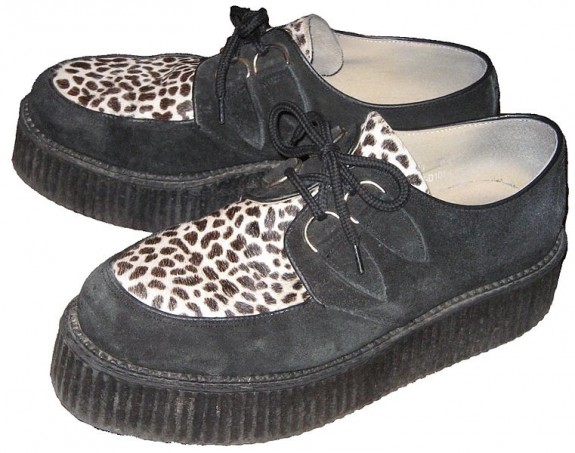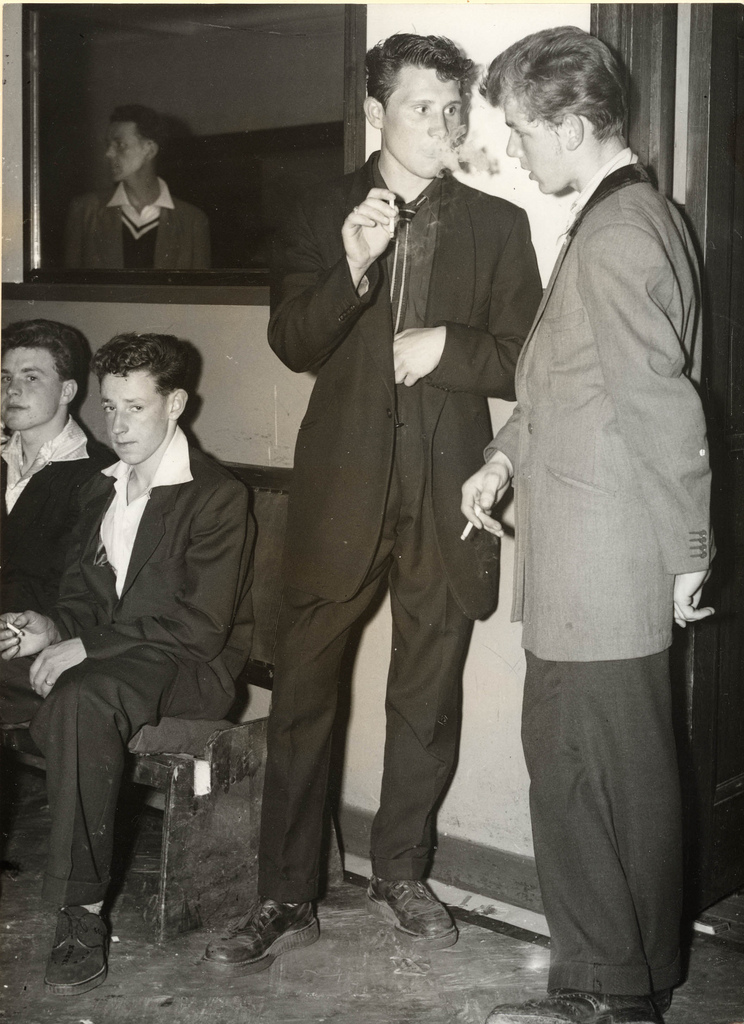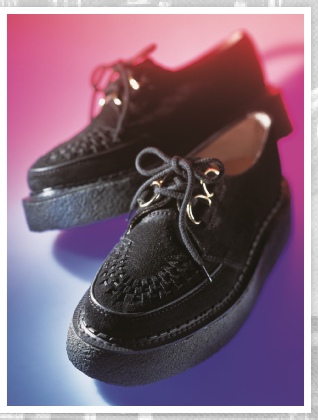Where’d You Get Those Creepers?
The platform-soled, punk-style shoes have celebrated the ‘Teddy Boy’ spirit since the late 1940s
![]()
In modern slang, a “creeper” is that odd, socially awkward guy you know from the office, dorm, neighborhood, local restaurant. You can also call him a creep. A couple of years ago, Andy Samberg and his Lonely Island crew premiered the digital short called “The Creep,” with filmmaker and creeper John Waters, on “Saturday Night Live,” spawning a series of YouTube imitators mimicking the stilted, zombielike dance.
Going back 50 years, another dance spawned a different sort of “creeper.” The dance was done to the 1953 hit ”The Creep,” from big-band leader Ken Mackintosh. A slow shuffle movement, it was embraced by a subculture called the Teddy Boys, who became known as creepers.
The Teddy Boys first appeared after World War II, with roots dating back to the Edwardian era. In addition to distinguishing themselves by their musical preferences, Teddy Boys made themselves known through their dandy-like sartorial choices that referenced the early 20th century. A popular look included drainpipe pants with exposed socks, tailored drapey jackets, button-down shirts, brogues, Oxfords or crepe-soled shoes. Those ridged, thick-crepe-soled shoes with suede or leather uppers became known as “creepers” because of their association with the Creep dance (and maybe because if you misspelled crepe, you got creep?).
When British soldiers returned from World War II battlefields, they were ready to let off a little steam. Still wearing their crepe-soled, military-issued boots, they hit the London nightclubs. The shoe soon gained the moniker “brothel creepers.”
In 1949, when the U.K.-based company George Cox Footwear began designing sturdy, crepe-soled shoes, the style took off, particularly among the Teddy Boy set. With its combination of sturdy construction and “flair for originality,” the creeper became the company’s signature shoe.
In fact, this “Behind the Scenes” blog post about a current collaboration between Cox and the brand Fred Perry describes how making creepers at Cox entails meticulous handiwork that stands out among mass-manufactured goods of today. ”The company, famed for its creeper styles, utilises a production process known as Goodyear welting. The hands-on nature of this construction means that the shoes take much longer to produce than those made using wholly mechanised techniques. Whilst many modern manufactured shoes have their soles simply glued on, the Goodyear welting process involves several stages of sealing with each shoe individually finished by a skilled craftsman,” says the blog post.
After a lull in popularity, creepers re-emerged in the 1970s. We can thank Malcolm McLaren, Vivienne Westwood and the punk scene for reviving the distinctively soled style, as well as cyclical fashion trends in general. The Teddy Boy was back in fashion subcultures, although it remained far from the mainstream. McLaren and Westwood’s Let It Rock shop in London, which was renamed Too Fast to Live Too Young to Die, and then renamed Sex, kept the shoes in stock.
In addition to George Cox Footwear, brands like Underground and T.U.K. make creepers. They have been a mainstay in ska, punk, goth and glam for decades.
Just like punk itself, creepers have found their way onto runways, and they’ve gone more mainstream since the days of hunting them down at punk boutiques like Trash and Vaudeville on St. Marks Place in New York’s East Village. Even Rihanna is sporting them, albeit with her own rebellious take.
/https://tf-cmsv2-smithsonianmag-media.s3.amazonaws.com/accounts/headshot/emily-spivack-240.jpg)



/https://tf-cmsv2-smithsonianmag-media.s3.amazonaws.com/accounts/headshot/emily-spivack-240.jpg)